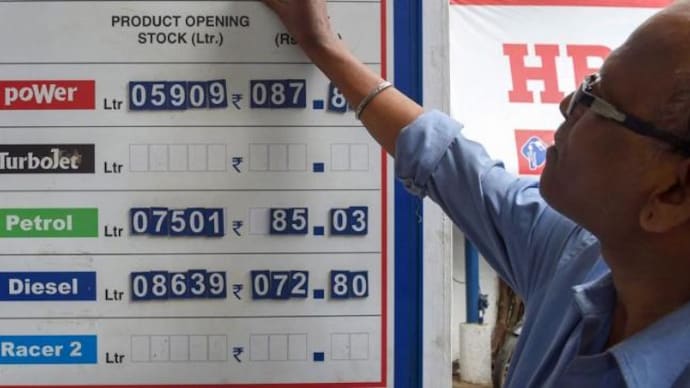Why government is not cutting petrol, diesel prices
Petrol and diesel prices are breaking records every day. But the government is unlikely to cut petrol and diesel prices in the election year.

In Short
- Petrol, diesel prices going up since August 16
- A cut in excise duty will hamper government spending on social welfare schemes
- A cut of Rs 2 per litre would result in revenue loss of Rs 30,000 crore
Petrol and diesel prices have gone up every day since August 16. The prices of petrol and diesel are at an all-time high across the country. In Delhi, petrol sells today, September 17 at Rs 82.06 per litre 15 paise up from yesterday. Prices are highest in Maharashtra, where petrol prices have breached Rs 90 mark in a few places. In the east, petrol costs about Rs 84 in Kolkata while in the south, people have to pay more than Rs 85 for a litre in Chennai.
The prices of petrol and diesel are moving north taking the cue from international markets, where crude oil has seen a sharp rise in costs. The oil problem gets complicated for India due to the free fall in the strength of rupee against the dollar (today at 71.75, having touched the lowest mark of 72.91 on September 12).
However, despite the sudden rise in petrol and diesel prices leading to tremendous pressure build-up on the government to cut excise duty, there is no indication that the oil prices will come down on an intervention from the Modi regime.
But why will the government not intervene to bring relief to the people? It is a complicated question in an election year and the answer also lies in the intricacies of electioneering.
Taxes on petrol and diesel are important sources of revenue for both the Centre and states. Budget 2018-19 proposed a wide-ranging expenditure on the social outreach and empowerment schemes of the government. A cut in taxes on petrol and diesel will hit the government’s spending on these schemes.
The fact that the Modi government did not pass down the benefits of lower crude oil prices in the international markets for over two years after coming to power in 2014 makes its policy clear that petro-revenue is to be maximised to fund social welfare schemes.
All fuels are not market-linked and the Centre still bears a part of costs for kerosene, the common man’s fuel, and LPG, the kitchen fuel. The government subsidises kerosene and LPG to protect weaker sections of society. Budget 2018-19 put the combined LPG and kerosene subsidy bills at about Rs 25,000 crore. Around Rs 16,500 crore goes towards direct benefit transfer component of the LPG subsidy bill.
If the government decides to cut down taxes on petrol and diesel, its revenue generation will nosedive. The government estimates that for every Rs 2 cut in the price of petrol and diesel, there would be a revenue loss of around Rs 30,000 crore.
The government can ill-afford such a loss of revenue in an election year. Any reduction in expenditure on social welfare schemes would lead the government to be branded as anti-poor. And, a Rs 2 per litre cut may not help the government change its impression about managing petrol and diesel prices.
Also Read | Petrol price touches Rs 82 per litre in Delhi, inches towards Rs 90 in Mumbai
Ramdas Athawale says he is not affected by rising petrol, diesel prices
DEBATE | How will rising fuel prices impact BJP ahead of 2019 polls?
